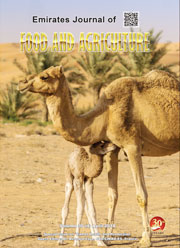APPLICATION OF RESPONSE SURFACE METHODOLOGY (RSM) IN CONDITIONOPTIMIZATION FOR ESSENTIAL OIL PRODUCTION FROM CITRUS LATIFOLIA
DOI:
https://doi.org/10.9755/ejfa.v24i1.10595Keywords:
CCF, C. latifolia, Essential oil, GC-MS, RSMAbstract
This research shows the dependence of distillation time and ratio of water/peel on amount of essential oil after distilling. Researching and optimizing the factors for essential oil production by laboratory ? scale distillation and the yield was evaluated using the Response Surface Methodology (RSM) with Central Composite FaceCentered (CCF) model. The regression equation obtained was shown below: 2 2 12 1 2 y = 0.997 - 0.015x + 0.04x - 0.107x - 0.042x . There is the contrast between distillation time and ratio of water/peel with volume of essential oil received. Optimal result is volume of essential oil was 1 ml (y) with quantity of lemon peel/batch of 50g, ratio of water/peel (x1) was 6/1, distillation time (x2) in 20 minutes at temperature at 100o C. The essential oil from the peel of C. latifolia was analysed by GC-MS method. A lot of compounds were identified of which limonene, ?? pinene and ??terpinenen were major components. Small amounts of trans-caryophyllene, 4-terpineol, ?- terpinenen?were also detected.










 .
. 